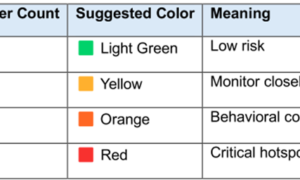Concrete block walls, also known as cinder block walls, are durable and versatile, often used in homes, garages, and outdoor projects. Over time, however, they can develop cracks, chips, or even structural damage due to weather, pressure, or age. Repairing a block wall might seem like a daunting task, but with the right tools and guidance, it’s a job you can tackle confidently.
In this article, we’ll walk you through the step-by-step process of repairing a concrete block wall, from identifying the problem to applying the finishing touches.
Why Do Block Walls Get Damaged?
Before diving into the repair process, it’s important to understand what causes damage to block walls. Some common reasons include:
- Weather Conditions: Freezing and thawing cycles can expand and contract the material, leading to cracks.
- Settling Foundations: Over time, the foundation of a building may shift, causing structural stress on the wall.
- Water Damage: Excess moisture can weaken the mortar and blocks, especially in areas with poor drainage.
- Impact: Heavy objects, such as vehicles or falling debris, can cause chips or fractures.
Tools and Materials You’ll Need
Gather these tools and materials before you start your block wall repair project:
- Safety goggles and gloves
- Chisel and hammer
- Wire brush
- Trowel
- Concrete mix or mortar mix
- Bucket and mixing tools
- Concrete patching compound
- Caulking gun with concrete crack filler
- Level
- Sponge and clean cloth
Step-by-Step Guide to Repairing a Block Wall
1. Assess the Damage
Start by carefully examining the wall to determine the extent of the damage. Look for:
- Cracks: Small hairline cracks or larger structural cracks
- Chips: Missing sections of the block
- Loose or crumbling mortar: Mortar that has fallen apart or loosened over time
If the damage is minor, you can proceed with simple patching. For significant structural issues, it might be best to consult a professional.
2. Prepare the Area
Preparation is key for a successful repair. Follow these steps:
- Clear the Wall: Remove dirt, debris, or loose mortar from the damaged area using a wire brush.
- Clean the Surface: Wipe down the area with a damp sponge to remove dust and ensure the surface is ready for bonding.
For larger cracks or damaged blocks, use a chisel and hammer to remove loose material. This step ensures a smooth surface for patching.
3. Repairing Cracks
For cracks, follow these steps:
1. Fill Small Cracks:
- Use a caulking gun to apply concrete crack filler into the gaps.
- Smooth the filler with a trowel or your finger, ensuring it’s level with the surface.
2. Repair Large Cracks:
- Mix mortar or concrete patching compound according to the instructions on the packaging.
- Use a trowel to press the mixture firmly into the crack, filling it completely.
- Level the surface and allow it to dry.
4. Replacing Damaged Blocks
If a block is severely damaged, it’s best to replace it. Here’s how:
1. Remove the Old Block:
- Use a chisel and hammer to break apart the damaged block and remove it piece by piece.
- Clear out old mortar from the space, leaving a clean surface for the new block.
2. Prepare the New Block:
- Apply mortar to the bottom and sides of the opening.
- Place the new block into the space and press it firmly into the mortar.
3. Secure and Level:
- Use a level to ensure the block is even with the surrounding wall.
- Fill any gaps with additional mortar, smoothing it with a trowel.
5. Fixing Loose Mortar
If the mortar between blocks is crumbling or missing, re-pointing the mortar joints can restore the wall’s strength.
1. Remove Old Mortar:
- Scrape out the damaged mortar using a chisel, being careful not to damage the surrounding blocks.
2. Apply Fresh Mortar:
- Mix a fresh batch of mortar and apply it to the joints with a trowel.
- Pack it tightly into the gaps and smooth it out.
3. Finish with a Sponge:
- After the mortar has partially dried, use a damp sponge to clean off any excess and smooth the surface.
6. Apply Finishing Touches
Once the repairs are complete, you can enhance the appearance of the wall:
- Paint or Seal: Apply concrete paint or a waterproof sealant to protect the wall from future damage.
- Inspect Your Work: Check for any missed spots or uneven areas and make adjustments as needed.
Preventing Future Damage
To extend the life of your repaired wall, consider these maintenance tips:
- Improve Drainage: Ensure water is diverted away from the base of the wall to prevent moisture damage.
- Regular Inspections: Check the wall periodically for cracks or signs of wear and address small issues early.
- Protect the Surface: Use a weather-resistant coating to shield the wall from harsh elements.
When to Call a Professional
While many block wall repairs can be handled with DIY efforts, there are times when it’s best to bring in an expert:
- Large structural cracks that compromise the wall’s integrity
- Issues related to foundation settling
- Extensive water damage requiring specialized solutions
Repairing a concrete block wall can be a straightforward process with the right preparation and materials. By following these steps, you can restore your wall to its original strength and appearance while preventing future problems. Whether you’re patching cracks, replacing blocks, or re-pointing mortar, taking the time to do it right ensures a lasting repair.
So, next time you’re faced with a block wall repair, you’ll have the confidence to tackle it like a pro!





























